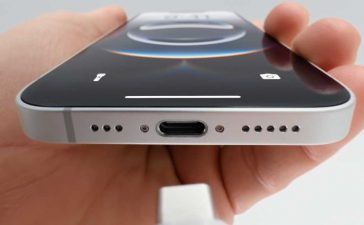The list of electric vehicles that qualify for the full $7,500 federal tax credit in the US has shrunk — considerably.
Thanks to new requirements about battery minerals and sourcing that kicked in on January 1st, only five battery electric vehicles are eligible for the full credit as well as one plug-in hybrid vehicle. A few more qualify for the $3,750 half credit. And that’s about it.
As you can see in the table below, the pure EVs that still qualify are as follows: the Chevy Bolt EV and Bolt EUV (soon to be discontinued and replaced with updated versions); two versions of the Ford F-150 Lightning; one version each of the Tesla Model 3 and Model X; and three versions of the Tesla Model Y. And don’t forget the Chrysler Pacifica PHEV, which is still eligible for the full credit as well.
(Vehicles placed in service on or after January 1st, 2024, and before January 1st, 2025.)
Other than that, it’s a pretty bare-bones list. The only other EVs on there are the Rivian R1T and R1S, which have been knocked down to half-credit status. A handful of plug-in hybrids, including the Ford Escape, Jeep Grand Cherokee 4xe and Wrangler 4xe, and Lincoln Corsair, will also receive half credits.
Popular EVs that previously qualified for the credit but have now fallen off the list include several versions of the Tesla Model 3, the Nissan Leaf, and Volkswagen ID.4. Other popular models, including the Hyundai Ioniq 5, Kia EV6, and Polestar 2, never qualified due to the fact that they’re manufactured outside of North America.
There was some confusion around which EVs would still qualify in the new year
There was some confusion about which EVs would still qualify in the new year. Tesla and Ford were among the companies telling customers and dealers that some of their models would likely become ineligible in 2024. This could prove awkward for car shoppers, some of whom may have been waiting until 2024 to buy an EV after hearing that dealers could start giving them instant access to the tax credit starting on January 1st.
Of course, this was all part of the phase-in process for new requirements under the Inflation Reduction Act of 2022. Thanks mostly to Sen. Joe Manchin (D-WV), the tax credit is structured in a way to become more restrictive as time passes. EVs with battery materials and components sourced from “foreign entities of concern” are now ineligible for the tax credit. In 2025, additional requirements will kick in for minerals used in batteries, like lithium, cobalt, graphite, and nickel.
China, North Korea, and Russia are examples of countries that the US considers foreign entities of concern. And that’s a problem for a lot of EVs because large swaths of the supply chain run through China.
China alone accounts for some 70 percent of the global supply of battery cells. Lawmakers have said that the Inflation Reduction Act is meant to level the playing field by weaning American battery dependency off of China and creating US jobs in the EV sector. Many car companies and their supply partners are now working to beef up US battery plants as a result.
Several companies have said they will build new factories in North America, including new mining operations. But those factories and mines will take years to come on line. And in the meantime, automakers are getting cold feet about the money they’ve committed to EV manufacturing as demand starts to cool.
Leasing remains an attractive option for car shoppers looking to go electric. Most pure-electric and plug-in hybrid vehicles, regardless of battery material origins or where the vehicle was manufactured, are eligible for the full $7,500 tax credit if they are leased. This is because leased vehicles are considered commercially owned vehicles. The financing divisions of the car company claims the credit on behalf of the customer, and use the savings to drive down the price of the lease.
Update January 2nd 3:26PM ET: Updated to clarify that the base model version of the Tesla Model 3 is no longer eligible for the tax credit, and to include information about leased EVs and PHEVs.












